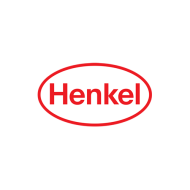Choosing a solution for marketing workflow optimization: What should you look for?
1. Flexibility and agility are the key!
When setting up a marketing workflow, make sure that it is not rigidly designed. Processes, tasks and participants can change, and you as the project manager must be able to adapt your workflows on your own. It is important to be able to change the process steps, participants and tasks at any time without outside help, IT support or programming knowledge. This is not possible with some workflow tools. one2edit is oriented towards real life, often in larger companies and their international marketing. You can use it to design workflows via simple drag & drop, change them and adapt them again and again to your current projects - without
limits. You can freely define or change process steps and participants, add languages, move dates, etc. If plan A doesn't work, you may quickly switch to plan B or C within our workflow.

2. Management of participants
In the analysis phase, you will quickly come up with a considerable number of internal and external participants who contribute directly or indirectly to the various content processes. So, flexible people management is essential in any marketing workflow. With our workflow, it is possible to remove or add experts, redistribute tasks, etc.. quickly and easily,
without losing valuable time.
3. Easy Integration of workflows to other systems
Marketing workflow is not just about localizing content as efficiently as possible. Content must also be produced and distributed as efficiently as possible, be it in print or digital form. Ideally, this step should also be automated. For this, standard
interfaces to common systems and social media channels must already exist or APIs must be available. This is the case with one2edit.
4. Brand-compliant editing of documents
In any marketing workflow, it must be ensured that participants can work with brand templates in an uncomplicated way. All participants in the marketing workflow should be able to edit templates in terms of the content: e.g. fill them with content, comment or translate them, and do so in a brand-compliant manner. With one2edit this is easy and secure. There’s no need to upload and download documents. Copy & paste of content was yesterday’s practice, so simply link the data sources, e.g. Excel files, with corresponding templates and have them updated automatically! There is also no need for further communication (e.g. annotating PDFs and sending them by mail). This not only saves valuable time, but also makes a significant contribution to quality assurance. The brand-compliant processing of documents is secured by individually adaptable rules. All participants use the same database and thus save so-called transaction costs, i.e. localization, adaptation, and coordination and approval rounds are significantly
faster.
5. Secure documentation
Complete documentation plays an important role in the production of any communication material. This is particularly crucial for our many corporate customers and well-known brands. It’s particularly vital in regulated industries such as pharmaceuticals/life sciences, banking and insurance. Equally so for stock market-relevant materials such as annual reports. When selecting a solution, you should therefore ensure that all tasks, steps, approvals and changes are automatically documented. With one2edit this is
the case.
6. Simple browser-based collaboration
The tool of your choice should enable browser-based collaboration. After all, the solution should significantly reduce your marketing workload and ensure simpler and more transparent collaboration for everyone - and not become a complicated IT project. Local installations of special programs are more of a hindrance and cause additional effort and coordination with IT. one2edit enables browser-based collaboration that is secure and fun. With one2edit, all participants do not have to license and install fonts and the like. That alone saves a lot of budget.




